David tests out the ever so shiny Formula Cura 4 brakes. Once he’s stopped looking at them, or himself in the reflection, how do they perform?
Having tried a lot of high end brakes, I’d never actually got to try Formula’s before in spite of drooling over them at previous Eurobikes. The Curas have been around a while, getting shiny in 2016, but these four piston Formula Cura 4 ones are (relatively) new.
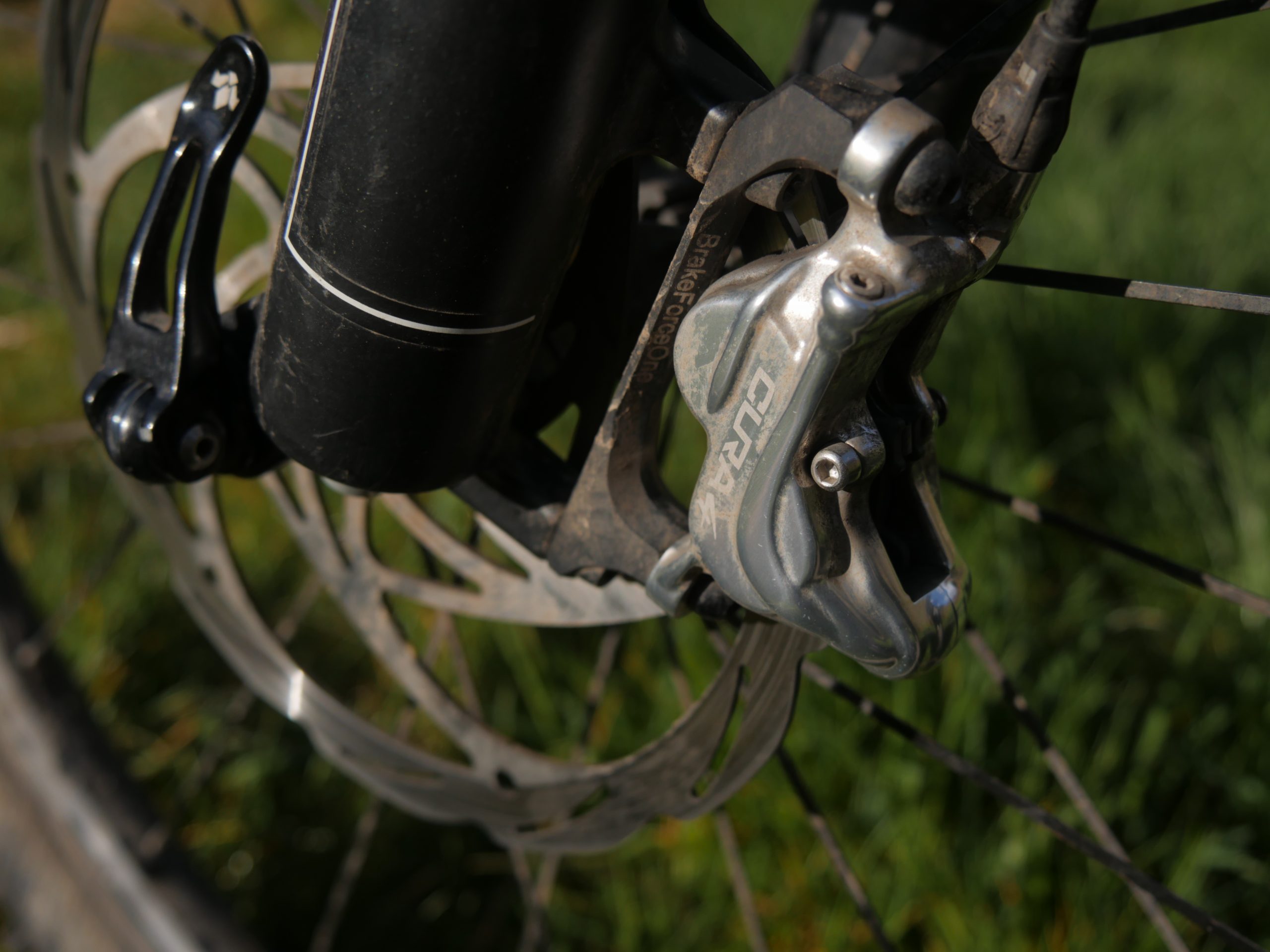

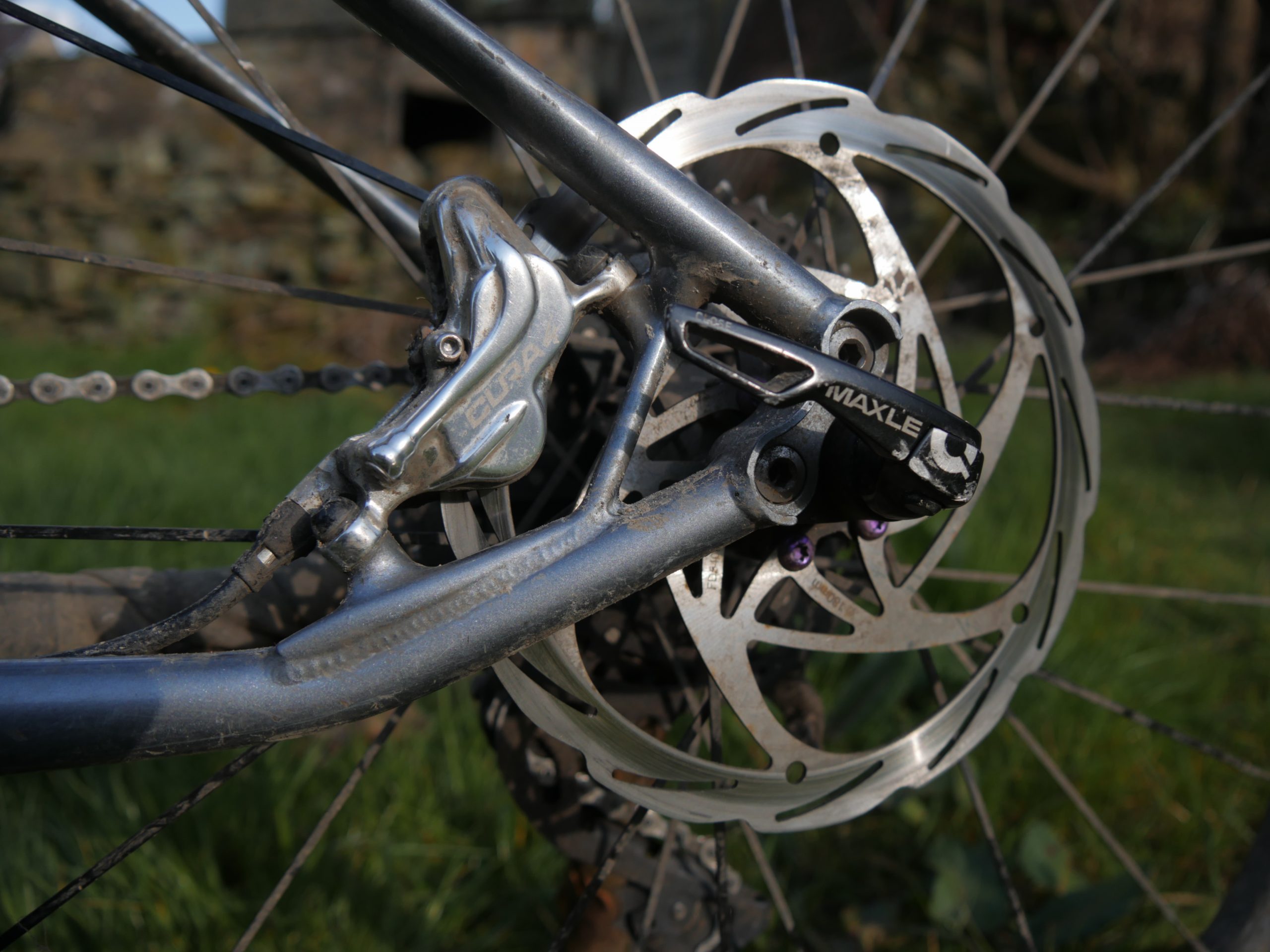
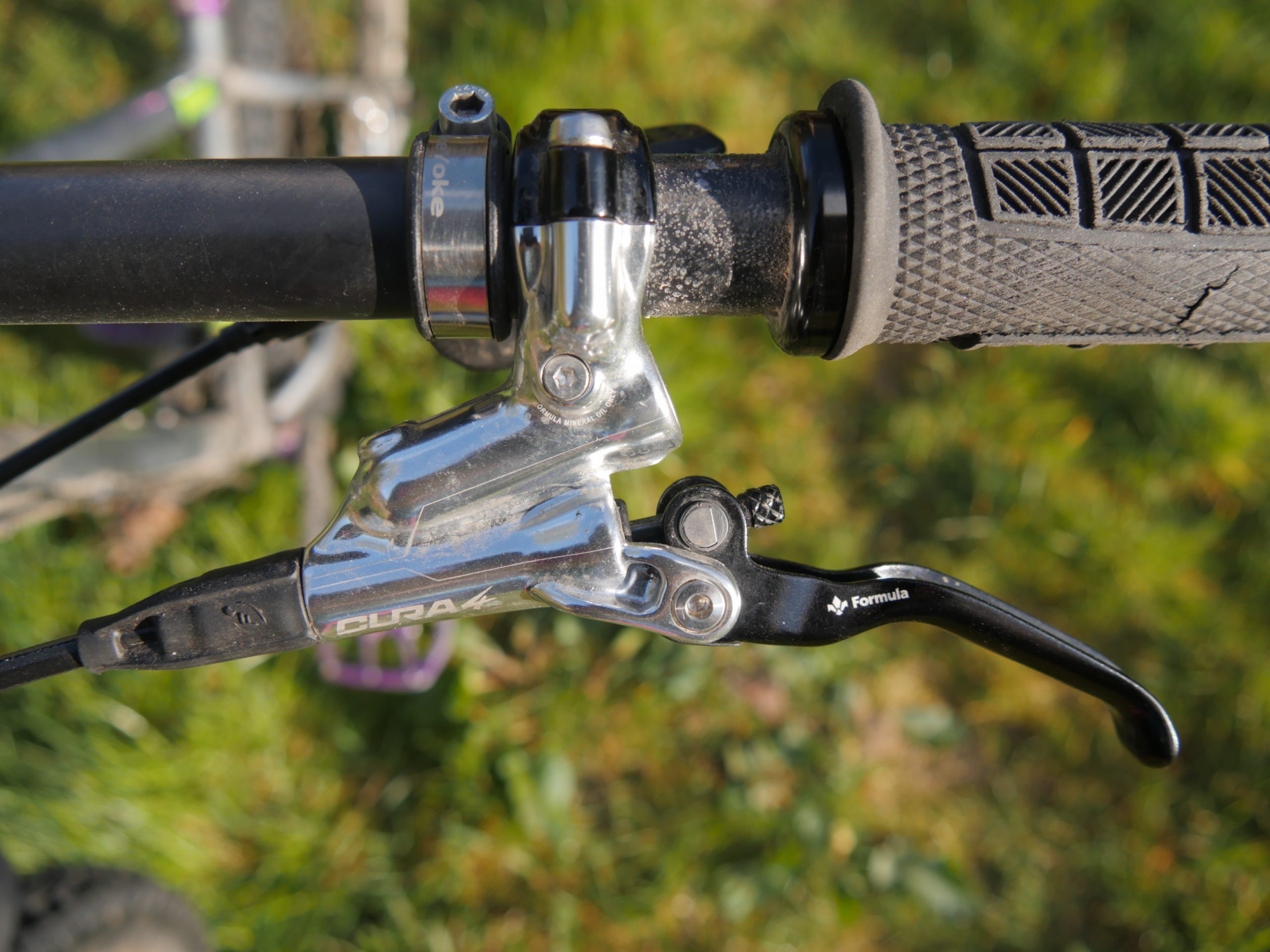
They are very shiny. Really shiny. So shiny it took me longer to photograph them and put them on the bike, because I was busy gazing and going “ooh”.
By default Formula Cura 4s come with 175cm hoses, but these seemed to have already been shortened. So much that, being giant, Ross couldn’t fit them to his bike and they ended up with me, for whom they were perfectly sized. I swear I didn’t hack his email (for the record though, Ross is a touch over 5’7″, on the borderline of small/medium sizing for most things, and if things are personalised prefers to go by the name “David Hayward”).
Latest Singletrack Merch
Buying and wearing our sustainable merch is another great way to support Singletrack
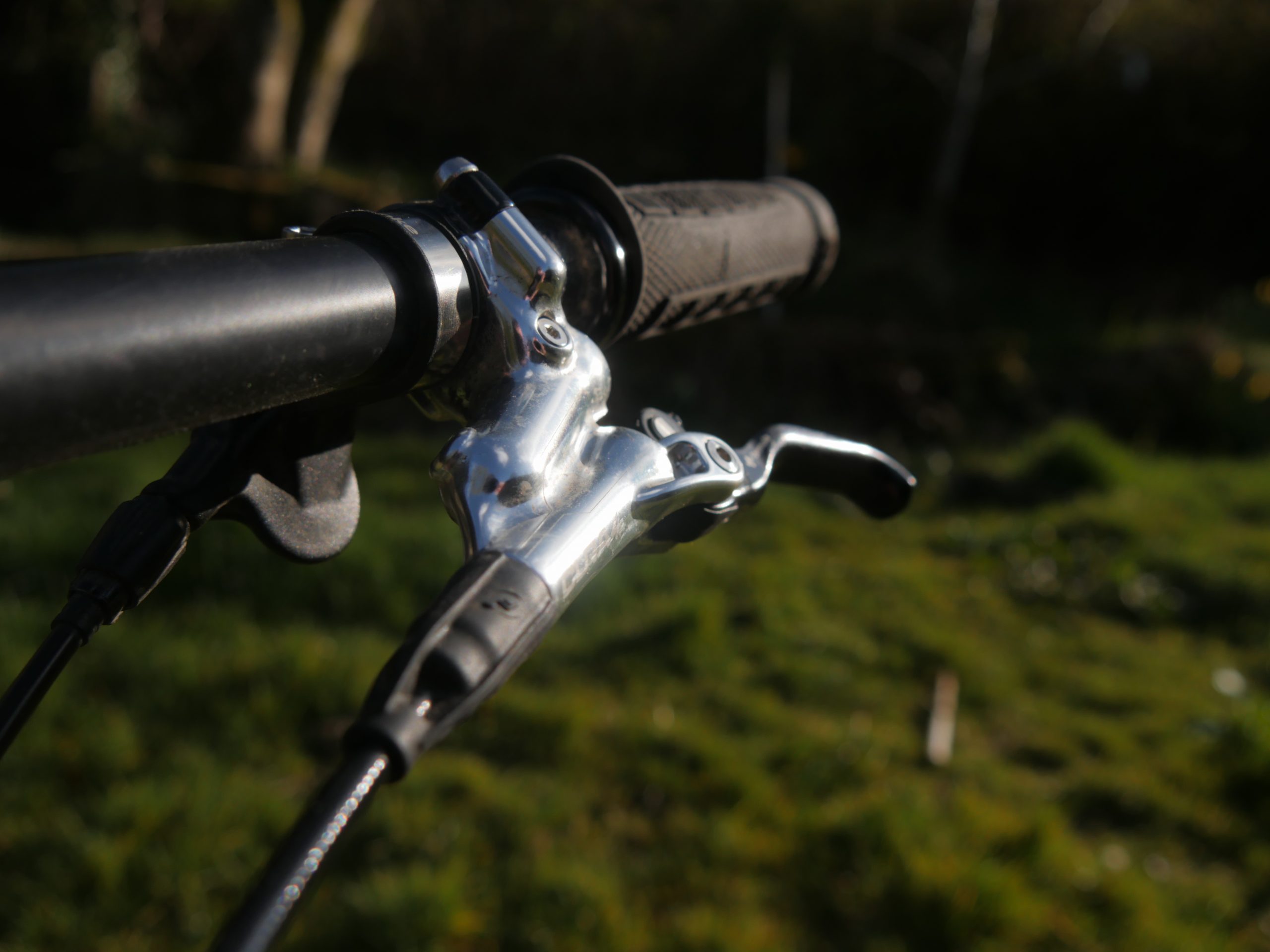
As well as polished silver, these are available in polished black and oh-so-blingy gold anodised. All have glossy black lever blades.
Installation and Set Up
Installation is pretty easy, though one of the reasons for that is I do nearly all brake testing on an externally routed hardtail – because who has the time? Arrows on the clamps face up, and much like Hayes’ clamps you tighten the top (designated on the Cura by an upward arrow) until it contacts the master cylinder, then tighten the bottom to the given torque.

Reach adjust is a little fiddly and out the way, being built into two small Allen bolts behind the lever blades, but once set you can forget it anyway. Definitely a faff with a multitool on a shakedown ride, but a long Allen key makes it easy.
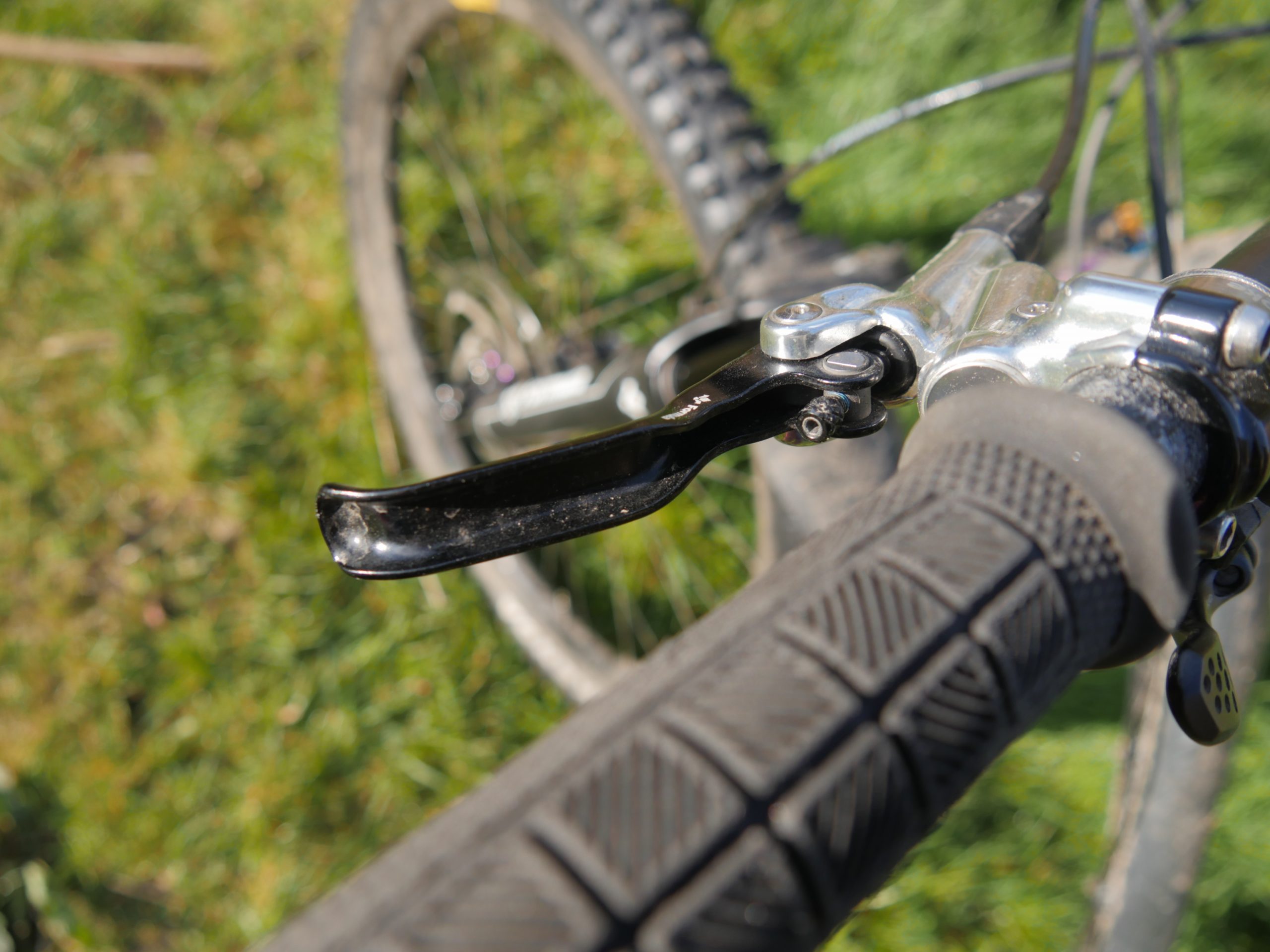
Aligning the caliper isn’t the fiddliest I’ve done, though I had to tweak them a little after cinching the bolts down first time.
The brake pads are secured by a bolt with threads at the head end, which in turn is secured at the other by a tiny circlip. The caliper bodies have a pleasingly machined recess they drop into but not through, making it easier to install pads than on some more simply machined brakes.
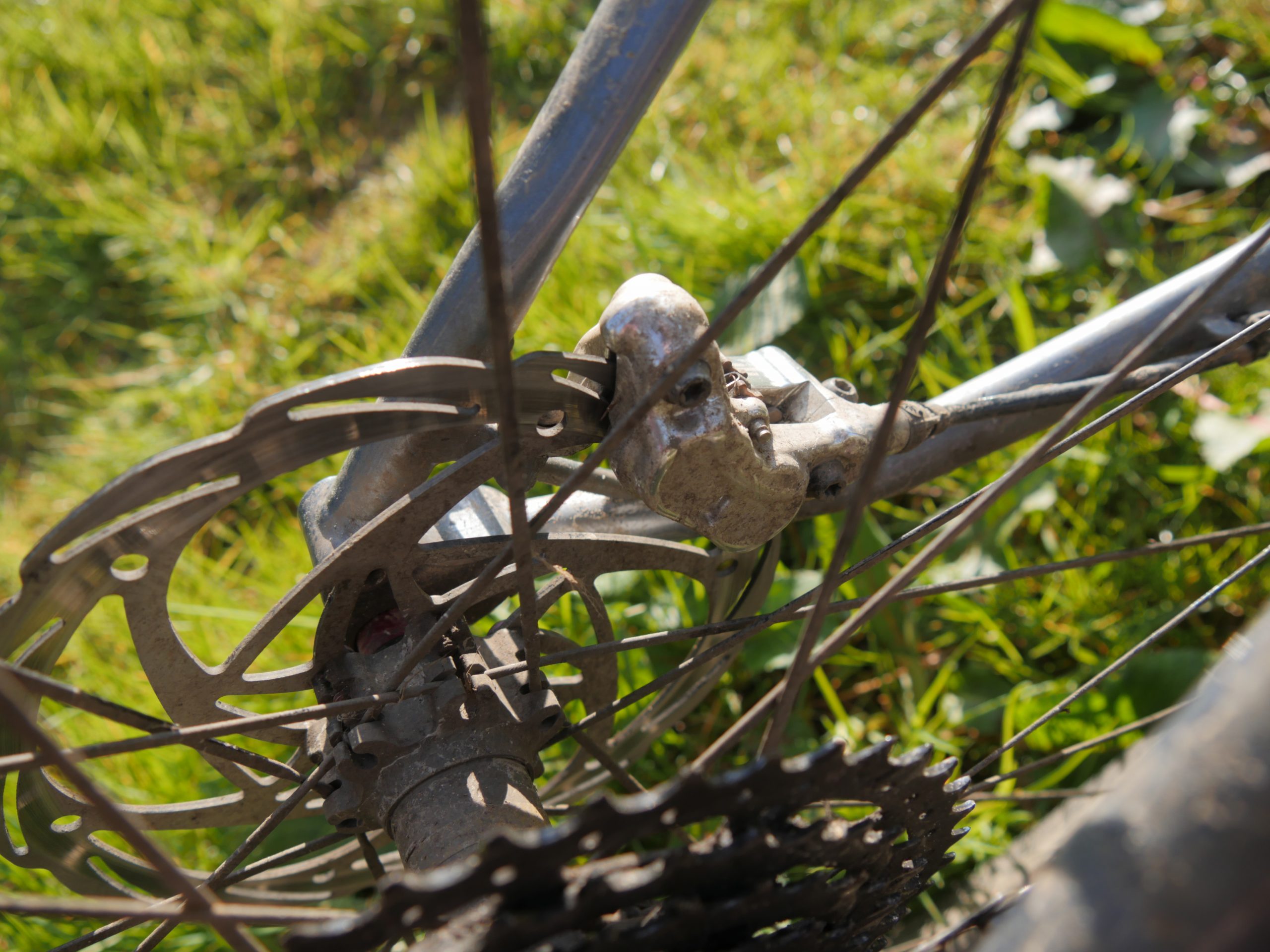

Near the end of this test, while changing front pads the circlip pinged off. Cursing myself and carefully sweeping the yard with a magnet on a stick, I noticed that, much like the front one now, the circlip for the rear brake was long gone even without the Curse of Hamfist. I guess there’s a reason Hope use little curly through pins to do the same thing. Less worried since seeing that, I’ve just put threadlock on both bolts.

The rotors are six bolt, and in Formula’s own words, bold type included, have extreme lateral stiffness (unlike everything else in the bike industry that’s laterally stiff, they’re not vertically compliant though, because a rotor shouldn’t be).
I confirmed weights at 243g for the front brake with 85cm hose, rotors: 200g/203mm, 161g/180mm.
Features
Formula Cura Brakes can optionally come with a thing named Speedlock, but these ones didn’t. What Speedlock does is make it easy to detach and reattach hoses from the calipers for tasks like internal routing, with apparently no fluid loss or air ingress.
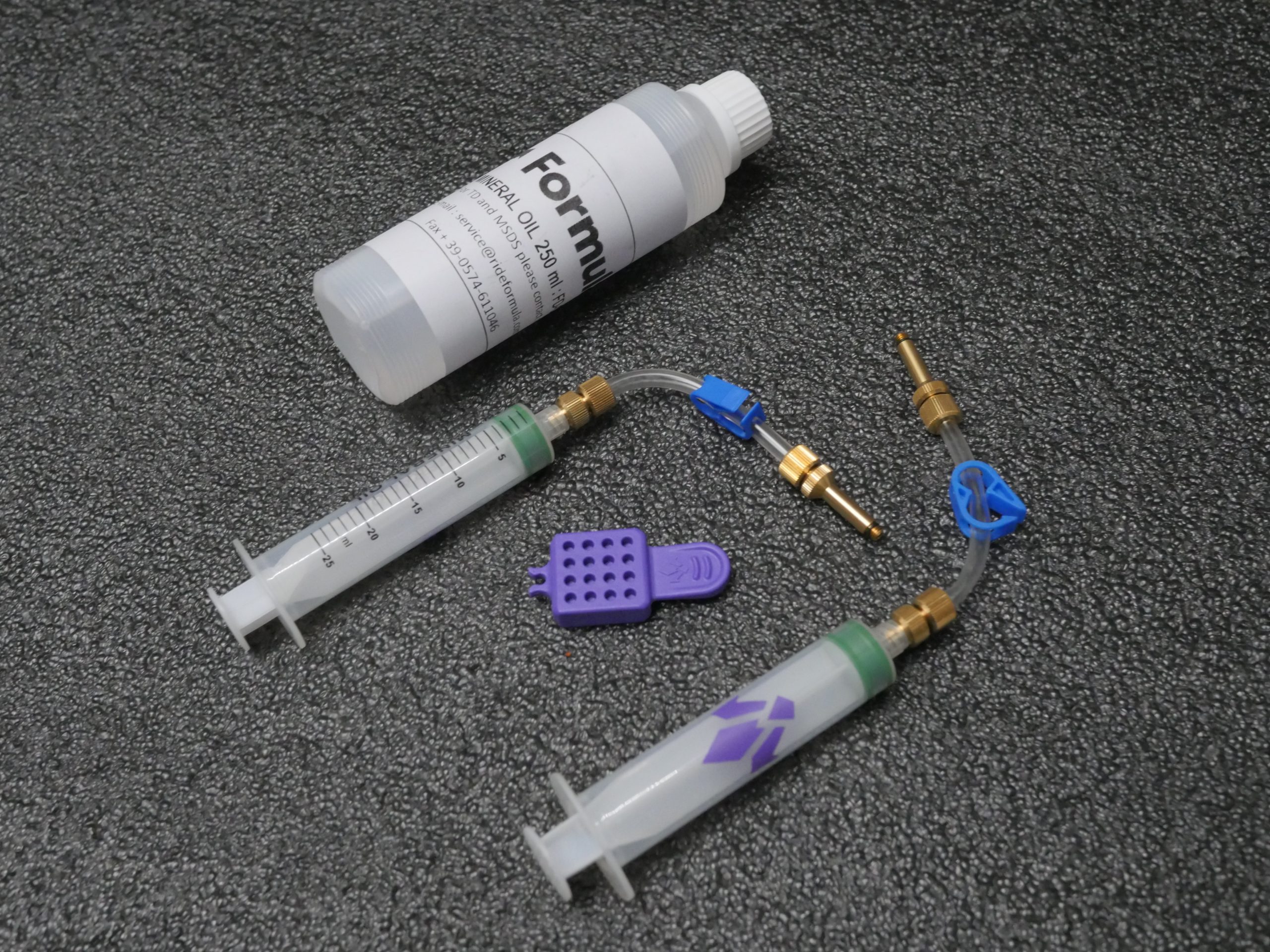
Like many manufacturers nowadays, Formula is also making aftermarket lever clamps to work with some gear shifters and dropper remotes, neatening up your bars. At present, this is SRAM Matchmaker and Shimano I-SPEC, though only I-SPEC B, not I-SPEC A or I-SPEC ii (nor upcoming standards I-SPEC Theta, I-SPEC [redacted], I-SPEC Milspec and I-SPEC YouSpec WeAllSpec).
Formula’s Feeling Control System is not compatible – you’re going to have to regulate your own moods, but being able to stop at will is always a happiness booster so brakes might help. I joke, FCS is an optional extra for controlling the bite point on some previous Formula brakes.
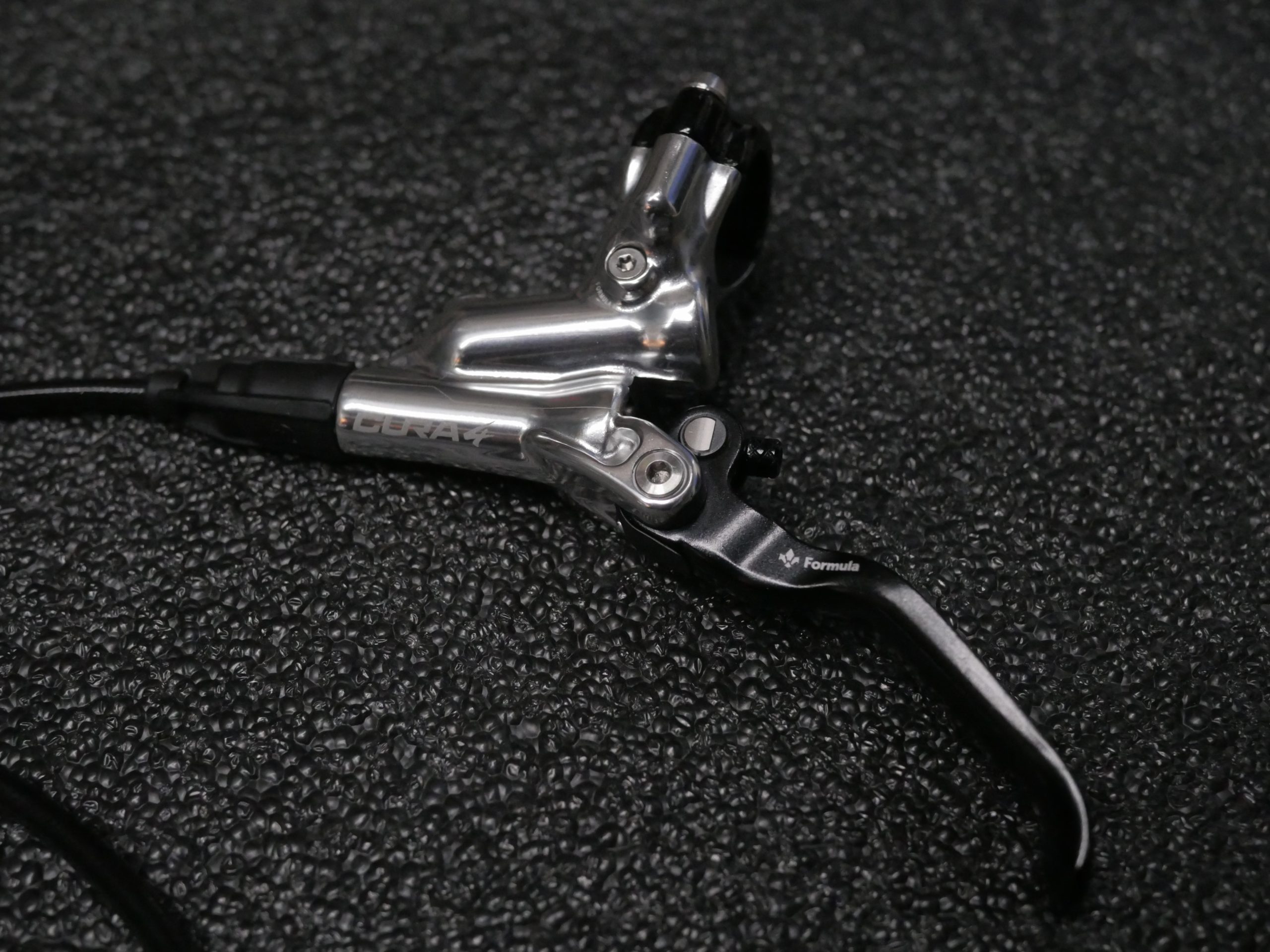
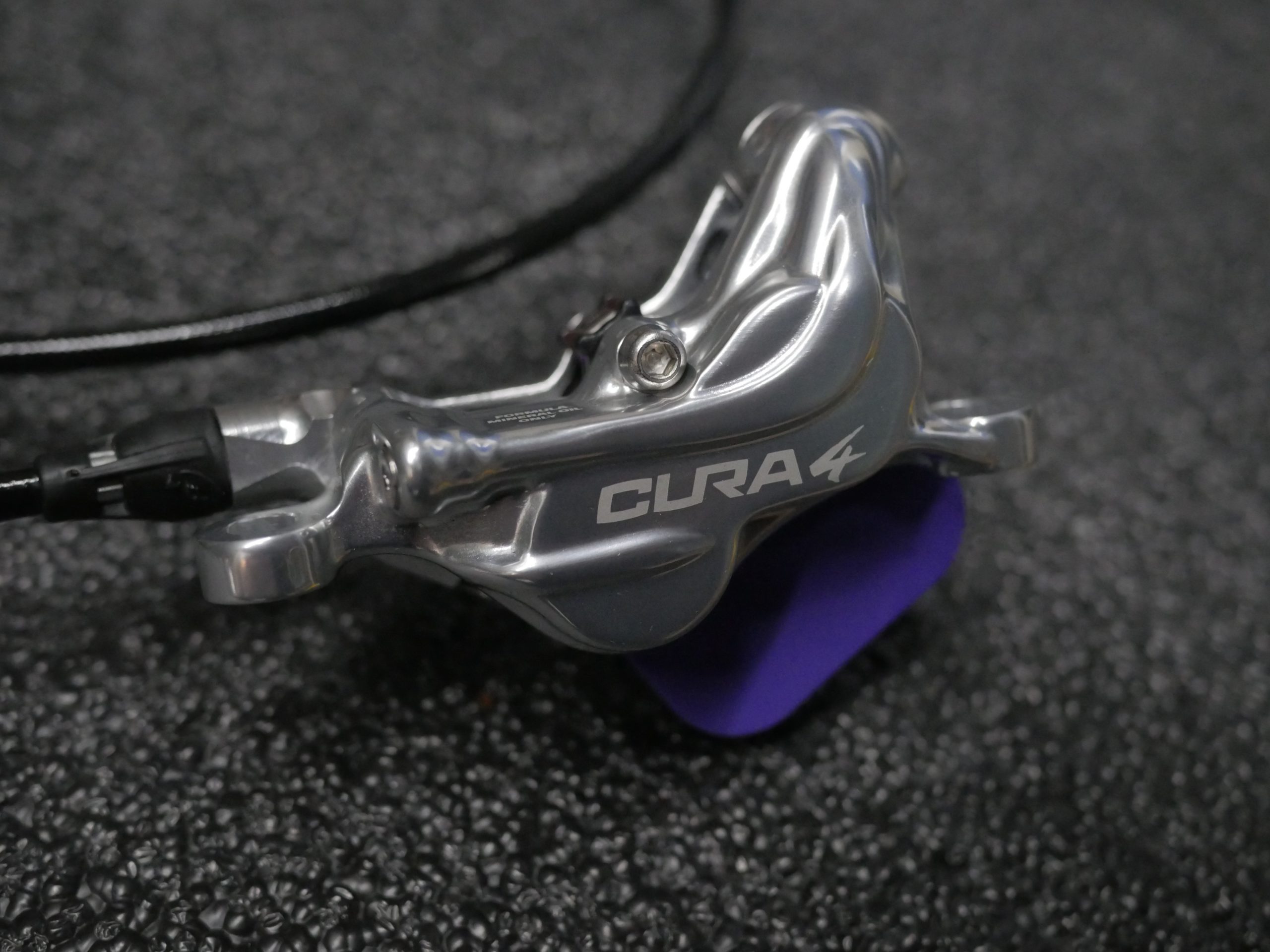

Rotors are decent quality, and stayed true, though have square rather than rounded edges (rounded: slightly safer to crash with, make wheel insertion slightly easier). After four months, I did have to true a very gentle rub out of one of the rotors, but that was it. Bending it seemed to take a little less force than other rotors I’ve done, but maybe I was just feeling a bit gung-ho that day. They certainly don’t feel flimsier than any of the other steel rotors I have on hand, and are comparable thickness at 1.95mm (I measured brand new rotors from Hayes at 1.93mm, and Brake Force One 1.9mm).
The Ride
Immediately, these feel… snappy! They have a very discernible zone of gentle modulation, then suddenly, WHAM, loads of power. Beyond that transition, there’s still lever travel to put even more power down, but they have a really good balance of gentle modulation followed by raw on/off power.
In use I found this became a really good selection of different braking powers – for either scrubbing a little speed, or creating a lot of stopping power, but never accidentally doing one instead of the other. No surprise bites or overcooking it in the gentle zone, ever.
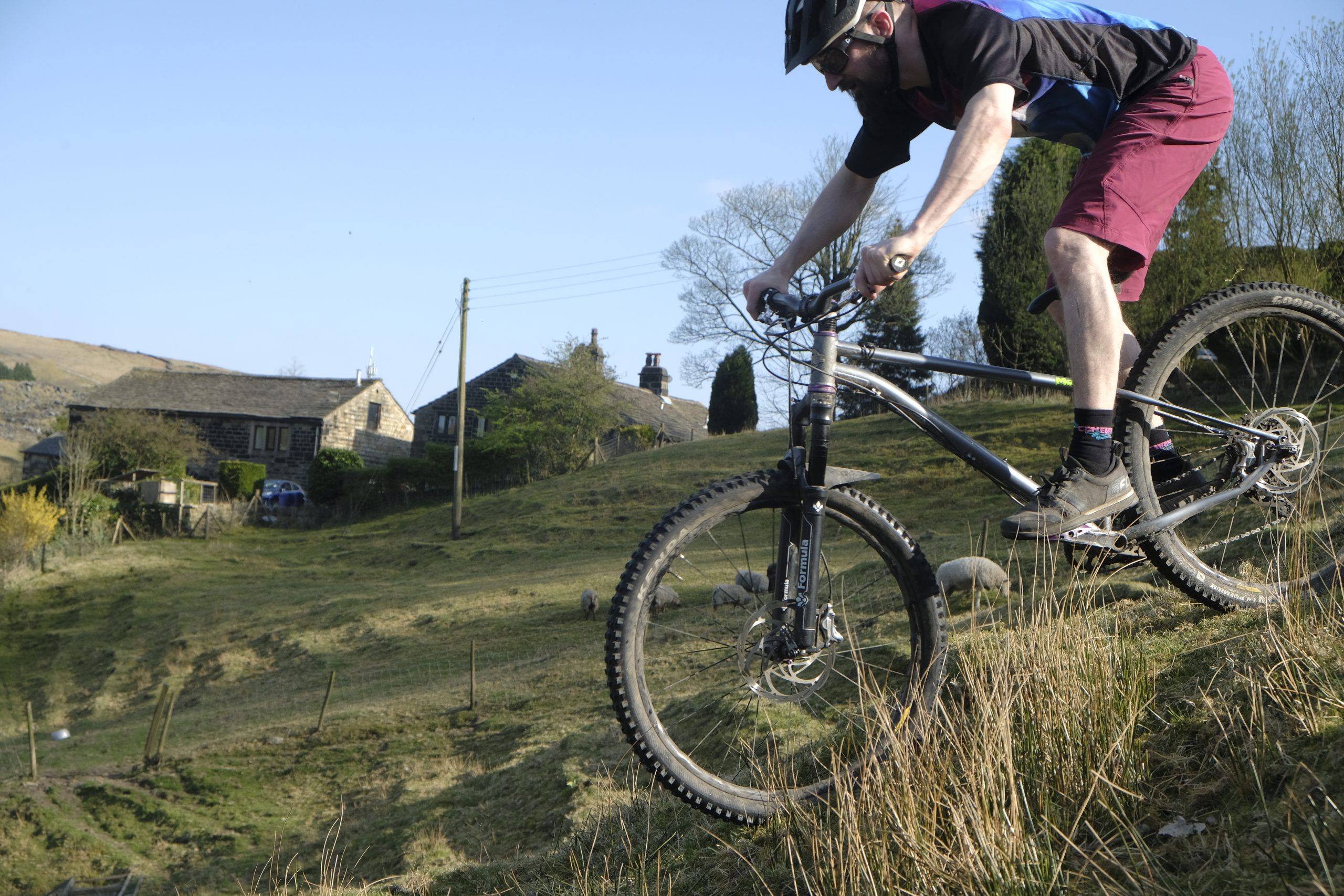
Mountain bikers seem to split between people who want a lot of brake modulation for precisely scrubbing speed, and those who want a lot of instant stopping power in order to brake as late as possible. I’ve always considered myself the latter, but the Formula Cura 4 seems to provide both options without compromise and that’s a lovely thing to have.
The lever itself feels very rigid once you’re at the bite point, as well as the polished finish being very smooth under your finger. It has a good hook, and good lever thickness where your knuckle wraps it at 14mm, compared to SRAM’s 14.75, Magura HC levers at 16mm, and Shimano’s 14.2mm. I worried the extremely smooth finish on the Cura 4s might work against grip, but it didn’t.

At no time in this test, with plenty of pre-lockdown riding thrown in around Calderdale and Scotland, were there any issues with overheating, fade, or wandering bite. These were flawless performers in that respect.
There was a little squealing in the wet, usually of the type that burns off with a bit of braking, but on a few rides it was persistent. On one of those rides, I learned a new weather word for what we were riding through: “clag”. I’d normally use this word to describe sticky mud, but apparently in parts of Scotland it refers to a particular type of mist that clings to stuff, including you.
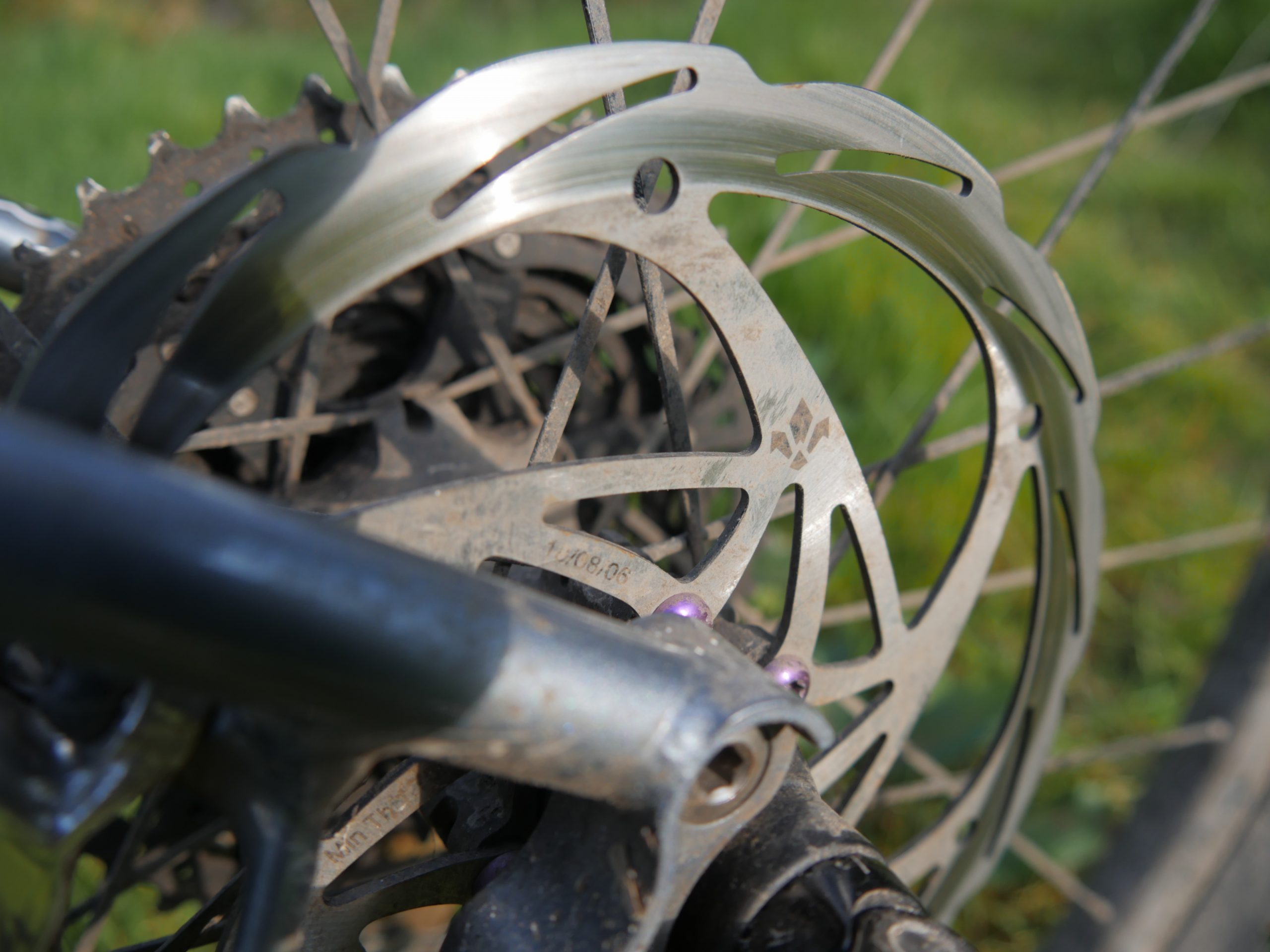
Comparing these to some other brakes I like: Hayes’ Dominion A4 has a more refined and lighter lever feel (but that’s true comparing those to pretty much anything out there barring hyper-expensive chi-chi brakes like Trickstuff). Compared to Magura MT7s, it feels like there’s a little less power, but it’s close and the Curas have more sensitive modulation.
For testing, these bumped Hayes Dominions off my steel hardtail. Having ridden Cura 4’s for four (phwoar) months, I’m in no rush to swap back.
Overall
Formula has crafted a brake with a lot of stopping power, extremely palatable braking characteristics, and a high quality finish to boot. From set up to stopping, they’ve been consistent in every respect and are a great brake choice.

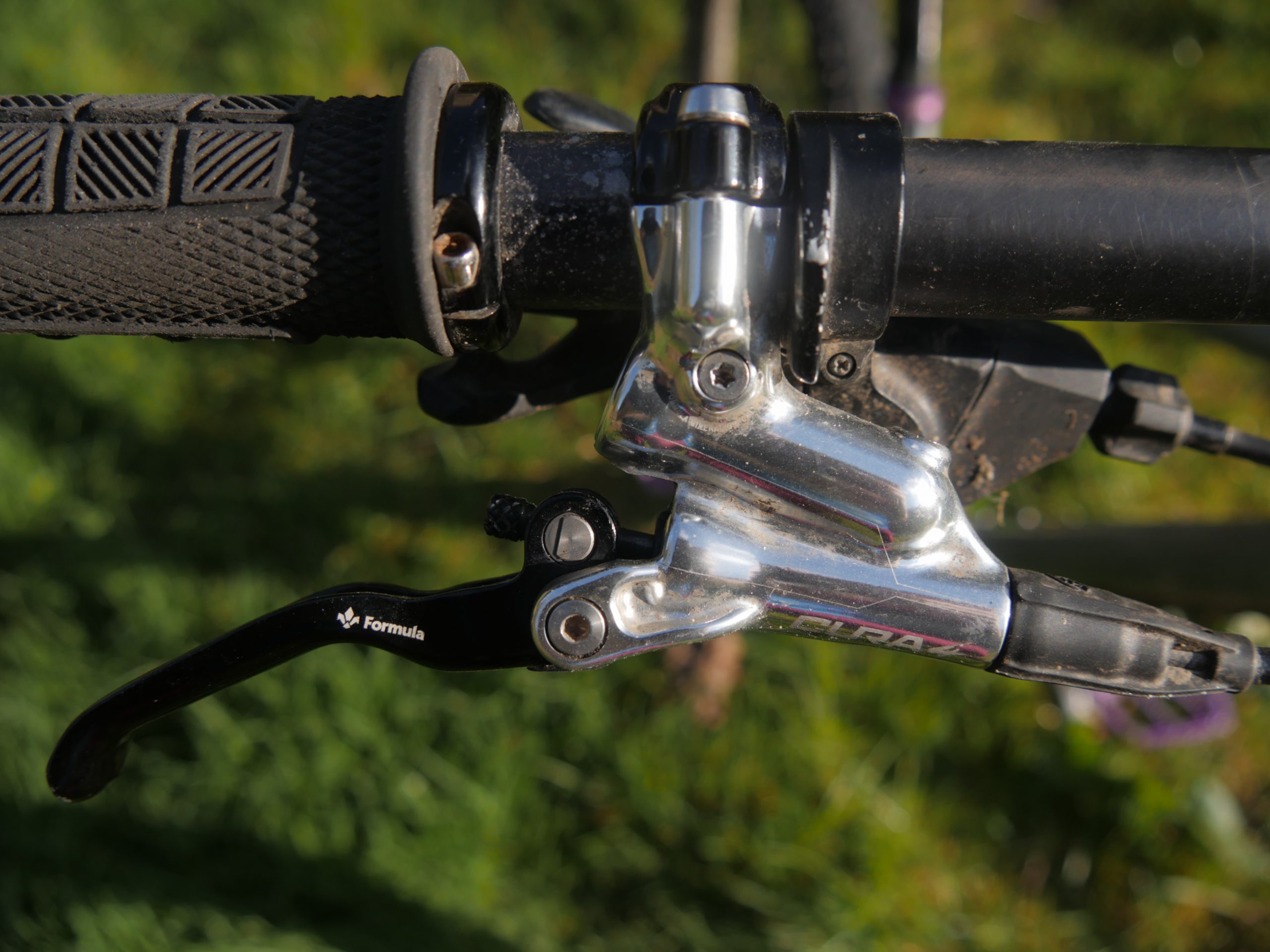




Great brakes. I’ve got 4pots up front and 2pots rear on my zesty and worlds better than the XT brakes I’ve had on the last couple of bikes. Just popped a full set of 2pots on a top fuel and they just work. Don’t think about them just intuitive. Same can’t be said of the constantly wondering bite point I used to know so well.
What’s the clearance like on these and the 2 pots? OK for a UK winter or a constant soundtrack?
My 2 posts have been fine this winter. Find them very quiet in South Wales typically conditions, especially compared to friends Maguras and my old XTs.
There is a recent thread where an owner of both 2 & 4 pots said the 4s have more clearance so were less sensitive to setup, not that I’ve had an issue with mine.
I sure hope they are stiffer than older rotors from Formula, which used to be so soft that they´d bend if you looked at them wrong…
Been looking at these for a while to replace my RO’s which have been fantastic.
Great review and sound like they are a decent brake..